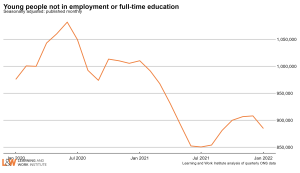March 2022
1. The labour market continues to recover, though employment remains below pre–pandemic levels
Employment fell by 12,000 in November to January 2022 compared to the previous quarter and remains 580,000 lower than before the pandemic. The timelier but less comprehensive measure of PAYE employees increased by 108,000 in February 2022 compared to the previous month and is 436,000 above its pre-pandemic level. This shows that the impact of the Omicron variant on the labour market has been minimal over the winter months. Unemployment fell by a further 88,000, but economic inactivity has risen and is now 420,000 higher than pre-pandemic.
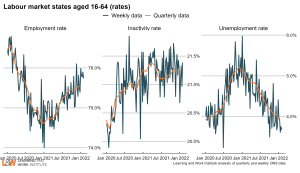
The number of vacancies in the ONS vacancy survey remains at record levels. The number of online postings supplied to Indeed is 49% above the February 2020 level (seasonally adjusted).
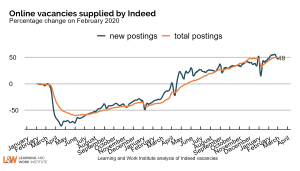
2. Prices continue to rise faster than wages, with the cost of living crunch set to worsen
The latest data show average regular earnings grew by 3.8% in the year to January 2022, though end of year bonuses in e.g. finance pushed headline earnings growth up a bit. With the Consumer Price Index rising by 5.5% in the year to January 2022, this means that real regular earning fell at the beginning of the year.
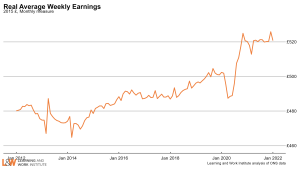
The cost of living crisis is likely to deepen in the months ahead with inflation set to rise further, including due to rising energy prices, and benefits planned to rise by less than inflation. This is likely to hit those on the lowest incomes the hardest. The Chancellor needs to act in the Spring Statement, including by increasing Universal Credit by more than planned so people get help now.
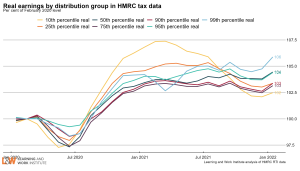
3. The drop in the economic activity rate means fewer potential workers for employers to recruit
Our analysis shows there are almost 1.2 million fewer economically active people (either employed or unemployed) than if pre-pandemic trends had continued. Around one third is the result of a lower population, two thirds due to people stopping looking for work (growth in economic inactivity). This helps to explain the difficulty some employers are reporting in filling vacancies – there are fewer people looking for or available for work. This isn’t just bad for business, it’s detrimental to people who would like to work but are dropping out of the workforce prematurely.

The biggest rises in economic inactivity most recently have been among those aged 50 and over and people with long-term health problems and disabilities. There are 2.3 million people economically inactive due to long-term sickness or disability, up 6.8% in the last six months, who should be a key focus.

In the recent ONS survey of older adults who have recently left work, 59% of the sample said they would not consider returning to work, 39% said they would consider returning to paid work in the future.
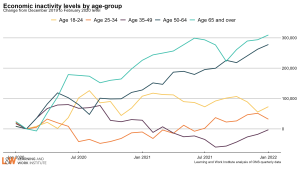
In addition, the number of people claiming unemployment-related benefits remains 421,700 above the survey measure of unemployment, despite a fall of 48,100 in February 2022 compared to the previous month. It is important that Jobcentre Plus engage with all of those on out-of-work benefits to ensure their status is recorded correctly and everyone who wants to work gets help to find a job.
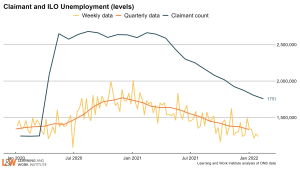
4. Long-term unemployment remains above pre-pandemic levels, but it’s falling for both young people and older adults
Long-term unemployment is a particular concern as it reduces people’s chances of finding work and can reduce their health and wellbeing.
Long-term unemployment rose significantly through the pandemic. It has fallen recently for young people and is 3,000 higher than pre-pandemic. There are 79,000 more people aged 25 and over out of work for 12 months or more than before the pandemic (Dec 19-Feb 20), though this is now falling (either due to people finding work or moving into economic inactivity).
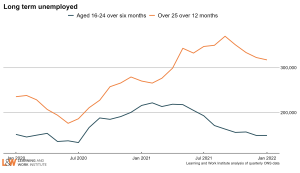
There are 885,000 (13%) young people not in employment or full-time education, up on the lows seen in summer 2021 but down on pre-pandemic levels. Overall, support for young people remains too disjointed: we argue for a Youth Guarantee to offer all 16-24 year olds a job, training place or apprenticeship.
